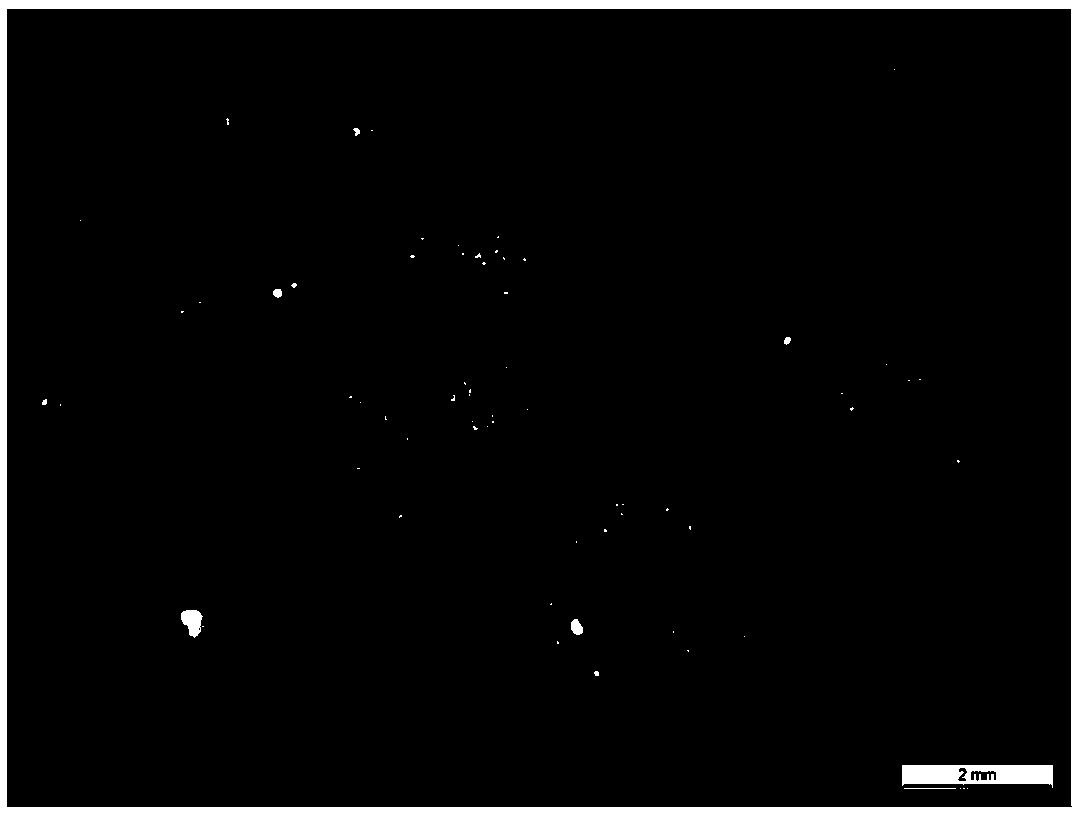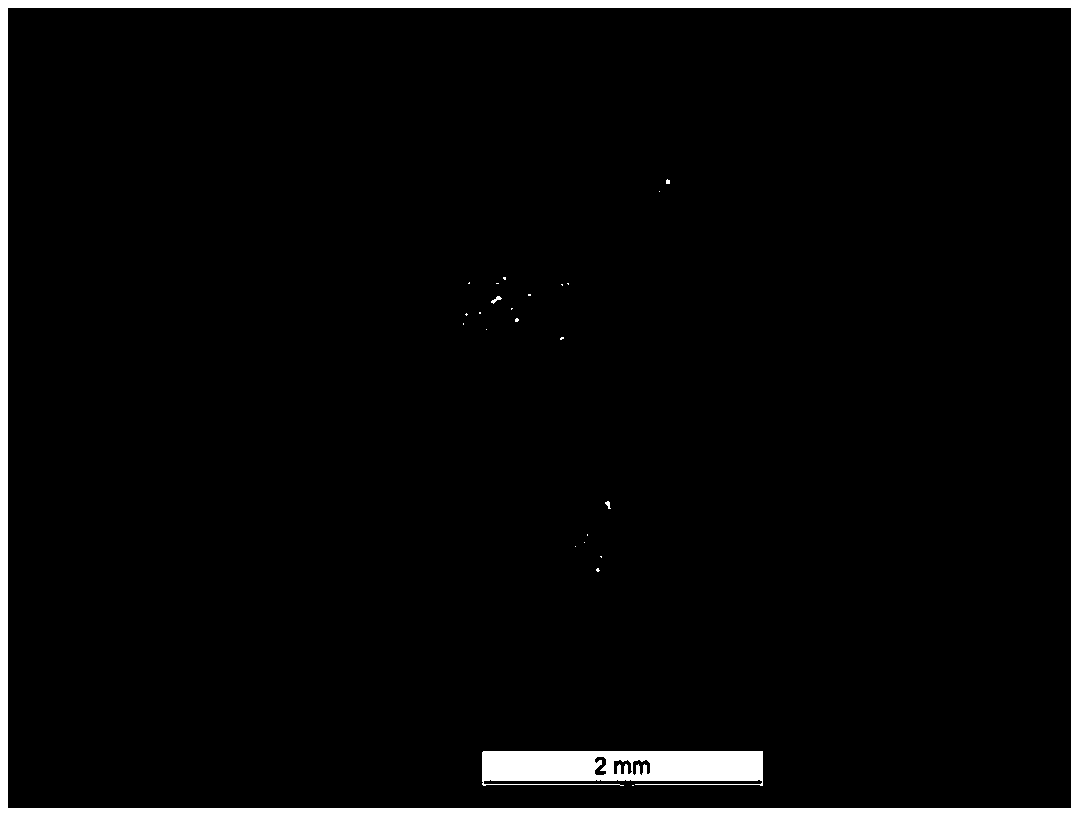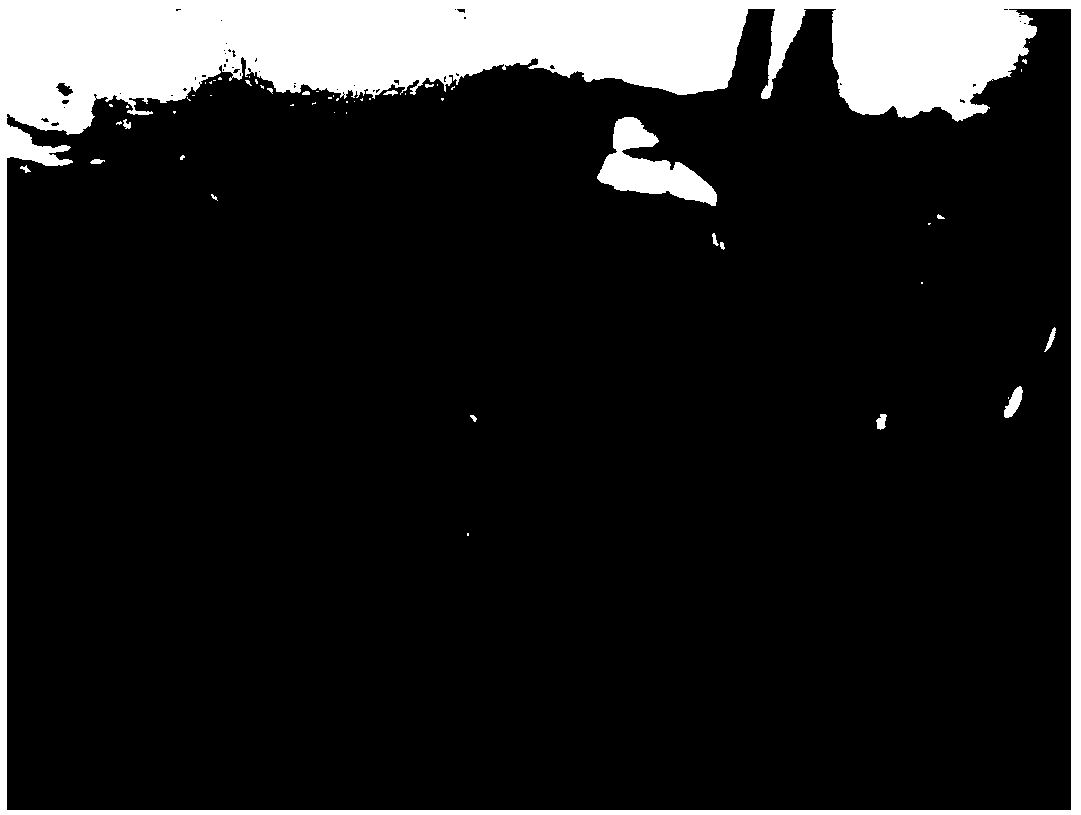Passiflora foetida tissue culture method
A tissue culture and dragon fruit technology, applied in the field of plant tissue culture, can solve the problems of no induced somatic embryos and adventitious buds, and achieve the effects of increasing the possibility of material utilization, large quantity and low pollution rate.
- Summary
- Abstract
- Description
- Claims
- Application Information
AI Technical Summary
Problems solved by technology
Method used
Image
Examples
Embodiment 1
[0048] Embodiment 1: Tissue culture method for inducing somatic embryos (1)
[0049] (1) Preparation of explants
[0050] The test material Longzhu fruit is a seedling with a height of about 12 cm after three months of growth, which is cultivated by seed sowing. Select young, robust, and basically consistent growth dragon fruit leaves as explants, rinse them under tap water, and then wash them with sterile water for 3 times. Put the cleaned leaves on the ultra-clean workbench, first wipe the front and back of the leaves with a cotton ball dipped in a 75% ethanol aqueous solution, and then wash them with sterile water for 3 times, and then use the final concentration as the mass Fraction 0.02% Tween-20 mass fraction 0.1% HgCl 2 The solution was soaked for 3 minutes, and finally washed 5 times with sterile water. The sterilized leaves were cut into small cubes of about 1 cm×1 cm as explants.
[0051] (2) Induction of somatic embryos
[0052] Insert the explants into the som...
Embodiment 2
[0059] Embodiment 2: Tissue culture method for inducing somatic embryos (2)
[0060] (1) Preparation of explants
[0061] The test material Longzhu fruit is a seedling with a height of about 8 cm after three months of growth, which is cultivated by seed sowing. Select young, robust, and basically consistent dragon fruit leaves as explants, rinse them under tap water, and then wash them twice with sterile water. Put the cleaned leaves on the ultra-clean workbench, first wipe the front and back of the leaves with a cotton ball dipped in 75% ethanol water solution by volume fraction, then wash them twice with sterile water, and then use the final concentration as the mass Fraction 0.02% Tween-20 mass fraction 0.1% HgCl 2 The solution was soaked for 5 minutes, and finally washed 4 times with sterile water. The sterilized leaves were cut into small cubes of about 1 cm×1 cm as explants.
[0062] (2) Induction of somatic embryos
[0063] Put the explants into the somatic embryo ...
Embodiment 3
[0070] Embodiment 3: Induce the tissue culture method of somatic embryo and adventitious bud (1)
[0071] (1) Preparation of explants
[0072] The test material Longzhu fruit is a seedling with a height of about 12 cm after three months of growth, which is cultivated by seed sowing. Select young, robust, and basically consistent growth dragon fruit leaves as explants, rinse them under tap water, and then wash them with sterile water for 3 times. Put the cleaned leaves on the ultra-clean workbench, first wipe the front and back of the leaves with a cotton ball dipped in a 75% ethanol aqueous solution, and then wash them with sterile water for 3 times, and then use the final concentration as the mass Fraction 0.02% Tween-20 mass fraction 0.1% HgCl 2 The solution was soaked for 3 minutes, and finally washed 5 times with sterile water. The sterilized leaves were cut into small cubes of about 1 cm×1 cm as explants.
[0073] (2) Induction of somatic embryos and adventitious buds...
PUM
 Login to View More
Login to View More Abstract
Description
Claims
Application Information
 Login to View More
Login to View More - R&D
- Intellectual Property
- Life Sciences
- Materials
- Tech Scout
- Unparalleled Data Quality
- Higher Quality Content
- 60% Fewer Hallucinations
Browse by: Latest US Patents, China's latest patents, Technical Efficacy Thesaurus, Application Domain, Technology Topic, Popular Technical Reports.
© 2025 PatSnap. All rights reserved.Legal|Privacy policy|Modern Slavery Act Transparency Statement|Sitemap|About US| Contact US: help@patsnap.com



